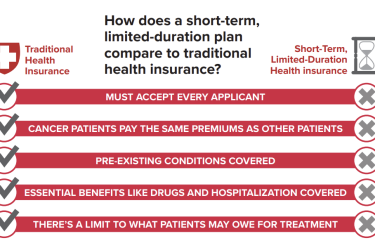
Confused about which bill the Senate is going to take up to begin its ACA repeal debate?
So is the Senate.
Remember the grief Nancy Pelosi took for saying, “we have to pass the bill so that you can find out what’s in it” during the Affordable Care Act debate?
Just wait for the campaign ads quoting John Cornyn, the number two Republican in the Senate saying last week the GOP doesn’t have the “luxury” of knowing in advance what they are voting on to repeal and/or replace Obamacare. “That’s a luxury we don’t have,” he said.
So what is the Senate doing?
The first vote –expected on Tuesday – is on “the Motion to Proceed.” Technically the Senate will use the House-passed American Health Care Act repeal bill to get started on the motion, which simply gets a bill to the Senate floor and starts the debate.
It’s likely to fail. As I write this Sunday afternoon, it does not seem likely that Mitch McConnell can muster the 50 votes to proceed. (Vice President Mike Pence would be the tie-breaking 51st vote.) Of course this has been a very unpredictable process – but it’s really not likely.
In that case, it’s either back to the drawing board for version 3.0 (or however we’re counting). Or move on and let the Sec. Tom Price and the Trump administration decide how much to stabilize/destabilize the ACA markets, or shift to a bipartisan approach on the Hill to do some stabilization on a bipartisan basis, although at this point, bipartisanship is a pretty heavy lift. (We’ll write more about these options once the Senate landscape becomes clearer.)
However, if the conventional wisdom gets flipped on its head and the motion to proceed does pass, what next?
That’s the mystery of the moment.
The first order of business would be to pass a big amendment to replace the House American Health Care Act with something else germinated in the Senate. Basically they would substitute that House bill starting point with a Senate bill.
But what?
It could be the latest version of the Senate’s Better Care Reconciliation Act (BCRA). That would probably (but not definitely) include an amendment by Sen. Ted Cruz, which lets health plans sell “skinny” non-ACA compliant plans as long as they sell ones that meet ACA rules. That’s likely to draw young and healthy people to the skinny plans – leaving older and sicker people to pay ever higher premiums for the comprehensive plans. Most insurance experts and leading groups in the health insurance industry itself say that would lead to a death spiral, although HHS released a report saying otherwise. (Here’s Cruz’s press release on that.)
Alternatively, instead of BCRA, the Senate could vote on a slightly modified version of the 2015 repeal bill which passed – but which was in many ways a symbolic vote at the time because the Republicans knew that then-President Barack Obama would veto it (as he did). It’s being called “full repeal” – because it repeals without replacing the ACA, instead allowing a two-year delay to thrash that out. However, it doesn’t really repeal “everything.” It repeals the penalties for the individual and employer mandates, the premium subsidies, Medicaid expansion and the taxes the ACA imposed to pay for coverage expansion, but it doesn’t repeal the insurance market rules, like protection for pre-existing conditions. That’s another recipe for an unworkable market. (Here’s a Health Affairs summary of the 2015 bill – scroll down.)
No matter what vehicle they use as the basis for debate – the revised 2015 bill, or the BCRA bill, or a further revised version of either one that we could see McConnell roll out – it can be amended. Both Democrats and Republicans can offer many amendments under what’s known as a “votarama.” They have to be germane – but there can be a lot of them.
And, as if there isn’t enough confusion – the Senate parliamentarian has released preliminary guidance that several key provisions in the BCRA bill violate the arcane budget rules under which this bill is being considered, a process called reconciliation that allows the GOP to do this with 50 votes (which seemed attainable a few months ago). Here’s that preliminary guidance via a document disseminated by Senate Democrats. Abortion and Planned Parenthood funding are in the mix, as is the provision that undercuts essential health benefits in Medicaid.
Oh, and there also are two bills in the mix that would basically let the states work it all out, one from senators Bill Cassidy and Lindsay Graham, and another by Cassidy and Susan Collins. (The whole conversation about state determination is probably part of whatever comes next, if this bill fails, but it won’t be overnight. The Cassidy-Graham version could be offered as an amendment if there’s a Senate bill on the floor this week.)
Lots has been written about this whole legislative fruit salad (to paraphrase a memorable campaign phrase of Ben Carson). But if you want a single article that explains the options, and succinctly tells you the key provisions in the various versions, this post from the NPR Shots blog, written by Gisele Grayson may be your best bet. Read it fast though – it will all change on Tuesday.








